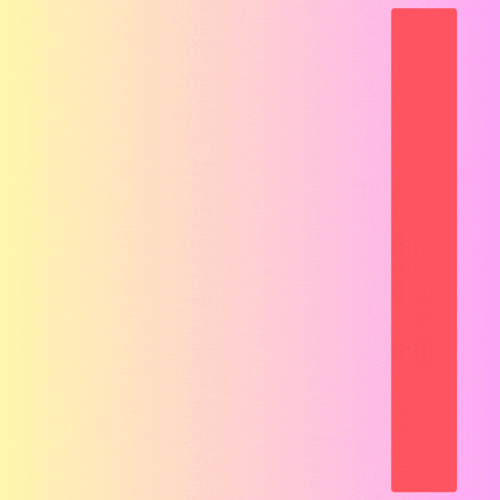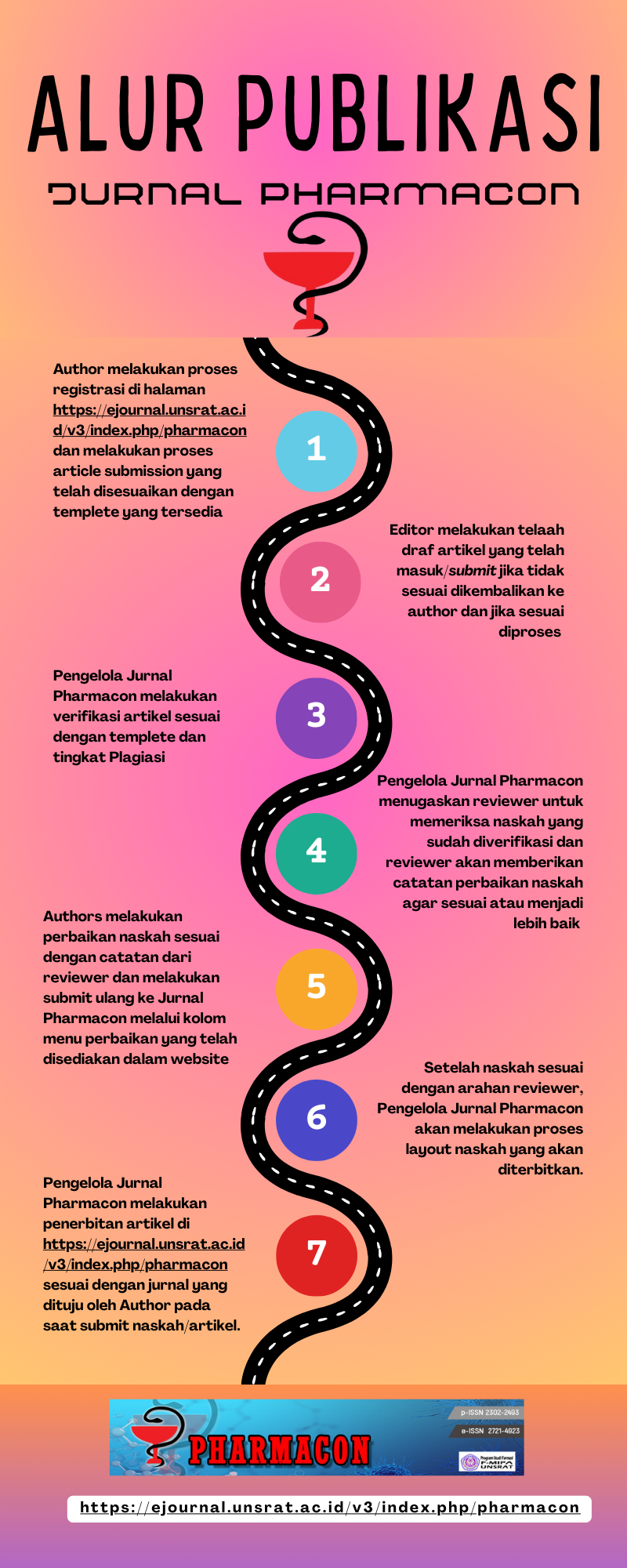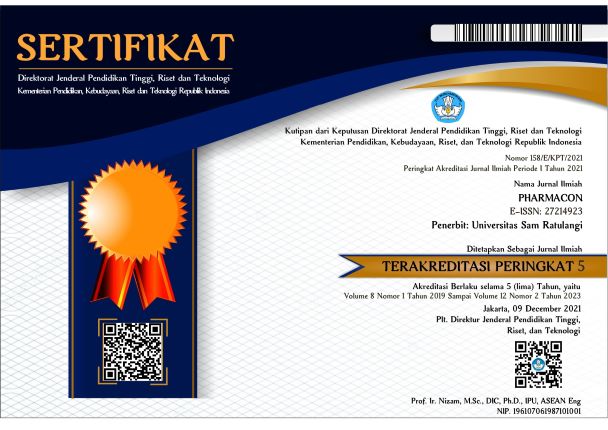ANTIBACTERIAL ACTIVITY TEST OF Liosina paradoxa SPONGE EXTRACT FROM POOPOH COASTAL WATERS, MINAHASA REGENCY
DOI:
https://doi.org/10.35799/pha.13.2024.50042Keywords:
Antibacterial, extraction, Liosina paradoxa , Staphylococcus aureus, Pseudomonas aeruginosaAbstract
Liosina paradoxa sponge contains an active compound that can act as an antibacterial. This study aims to determine the antibacterial activity of the ethanol extract of Liosina paradoxa on the growth of Staphylococcus aureus and Pseudomonas aeruginosa. The research was conducted using an experimental method. Extraction uses the maceration method to extract the active compounds from the Liosina paradoxa sponge. The extraction results were tested to determine whether there was antibacterial activity against Staphylococcus aureus and Pseudomonas aeruginosa; the test used the Kirby-Bauer agar diffusion method. The results of the test showed that there was antibacterial activity marked by the presence of an inhibition zone around the disc paper of the extract test solution on Staphylococcus aureus bacteria with a medium inhibition zone diameter of 7.25 mm and Pseudomonas aeruginosa bacteria with a medium inhibition zone diameter of 8.25 mm.
References
Abubakar, H., Wahyudi, A.T., Yuhana, M. 2011. Skrining Bakteri yang Berasosiasi dengan Spons Jaspis sp. Sebagai Penghasil Senyawa Antibakteri. Ilmu Kelautan: Indonesian Journal of Marine Sciences. 16(1): 35-40.
Agung Fitri Kusuma, Sri. 2009. Staphylococcus aureus. Jatinangor: Apt Fakultas Farmasi. Universitas Padjajaran.
Amir, I dan A. Budiyanto. 1996. Mengenal Spons Laut (Demospongiae) Secara Umum. Oseana. 21(2): 15-31.
Belarbi, El. H., Go´mez, A.C., Chisti, Y., García Camacho, F., and Grima, E.M. 2003. Producing drugs from marine sponges. Biotechnology Advances 21(7): 98-585.
Davis, W. W., Stout, T. R. 1971. Disc Plate Method of Microbiological Antibiotic Assay. Applied Microbiology. 22(4): 659-665.
Katzung, G.B. 1997. Farmakologi Dasar dan Klinik. Ed ke-4. Terjemahan Staf Dosen Farmakologi Fakultas Kedokteran Universitas Sriwijaya. Jakarta: EGC.
Hamdani, S., (2009), Metode Ekstraksi. http://catatankimia.com/catatan/metodaekstraksi.html [Diakses 28 oktober 2022].
Jawetz, E., Melnick, J., Adelberg, E. 2005. Mikrobiologi Kedokteran. Ed ke-4. Jakarta : EGC.
Katzung, B. G., 2004. Farmakologi Dasar dan Klinik. Edisi XIII. Buku 3. Translation of Basic and Clinical Pharmacology Eight Edition. Alih bahasa oleh Bagian Farmakologi Fakultas kedokteran Universitas Airlangga. Jakarta: Salemba Medika.
Lalamentik, G. 2017. Aktivitas Antibakteri Ekstrak Karang Lunak Klyxum sp. yang Diperoleh dari Teluk Manado. [skripsi]. Program Studi Farmasi FMIPA Universitas Sam Ratulangi, Manado.
Nugroho, A. W. 2010. Mikrobiologi Kedokteran Jawetz, Melnick, and Adelberg’s /Geo F. Brooks et al. 25th edn. Edited by A. Adityaputri. Jakarta: Buku Kedokteran EGC.
Oeiyano, W., Simbala, H., Rotinsulu, H. 2019. Uji Aktivitas Antibakteri Ekstrak dan Fraksi Spons Liosina paradoxa Dari Perairan Desa Tumbak Minahasa Tenggara Terhadap Pertumbuhan bakteri Staphylococcus aureus, Eschericia coli, dan Candida albicans. PHARMACON. 8(3): 629-638.
Ortez, J. H. 2005. Disk Diffusion testing in manual of antimicrobial susce ptibility testing. Marie B. Coyle (Coord. Ed). American society for Microbiology, America.
Pratiwi. 2008. Mikrobiologi Farmasi. Jakarta: Erlangga.
Ryan KJ, Falcow S. 1994. Medical Microbiology. Edisi ke-3. Amerika: Appleton and Lange.
Sarker, S.D., Latif, Z., and Gray, A.L. 2006. National Product Isolation. New Jersey: Humana Press.
Sembiring B. 2007. Teknologi Penyiapan Simplisa Terstandar Tanaman Obat. Warta Puslitbangbun. 13(2): 4-8
Soekiman, S. 2016. Infeksi Nosokomial Di Rumah Sakit. Ed ke-1. CV.Sagung Seto, Surabaya.
Suparno. 2005. Kajian Bioaktif spons laut (forifera: Demospongiae) Suatu Peluang Alternative Pemanfaatan Ekosistem Karang Indonesia Dalam Bidang Farmasi.[skripsi]. Institute Pertanian Bogor.
Susanto, D., Sudrajat dan R. Ruga. 2012. Studi Kandungan Bahan Aktif Tumbuhan Meranti Merah (Shorea leprosula Miq) Sebagai Sumber Senyawa Antibakteri. Jurnal Kesehatan. 11(2): 1-15
Suryanto E. 2012. Fitokimia Antioksidan. Putra Media Nusantara: Surabaya Tanjung.
Thakur, N.L., Muller, W.E.G. 2004. Biotechnological Potential Of Manrine Sponge. Journal Current Science. 86(11): 1506-1512.
Thiele, J. 1899. Studien über pazifische Spongien. II. Ueber einige Spongien von Celebes. Zoologica. Original-Abhandlungen aus dem Gesamtgebiete der Zoologie Stuttgart. 24(2): 1-33.
Tong SYC, Davis JS, Eichenberg E, Holland TL, Fowler VG. 2015. Staphylococcus aureus infections: Epidemiology, pathophysiology, clinical manifestations, and management. Clinical Microbiology Reviews. 28(3): 603-661.
Waluyo, L. 2004. Mikrobiologi Umum. UMM Press, Malang.
Warsa, U.C. 1994. Staphylococcus. Buku Ajar Mikrobiologi Kedokteran. Edisi Revisi. Binarupa Aksara, Jakarta.
Wilson, I. D, Michael C, Colin F.P, Edward R.A. 2000, Encyclopedia of Separation Science. Academic-Press: New York
WoRMS Porifera: World Porifera Database. http://www.marinespecies.org [Diakses 28 Oktober 2022].
Zeller JL. 2011. MRSA infections. The Journal of the American Medical Association. 306(16): 1818
Downloads
Published
How to Cite
Issue
Section
License
Copyright (c) 2024 Vania Consuella Pantow

This work is licensed under a Creative Commons Attribution-NonCommercial 4.0 International License.
Authors who publish with this journal agree to the following terms:
- Authors retain copyright and grant the journal right of first publication with the work simultaneously licensed under a Creative Commons Attribution-NonCommercial 4.0 International License that allows others to share the work with an acknowledgement of the work's authorship and initial publication in this journal.
- Authors are permitted and encouraged to post their work online (e.g., in institutional repositories or on their website) prior to and during the submission process, as it can lead to productive exchanges, as well as earlier and greater citation of published work (See The Effect of Open Access)










